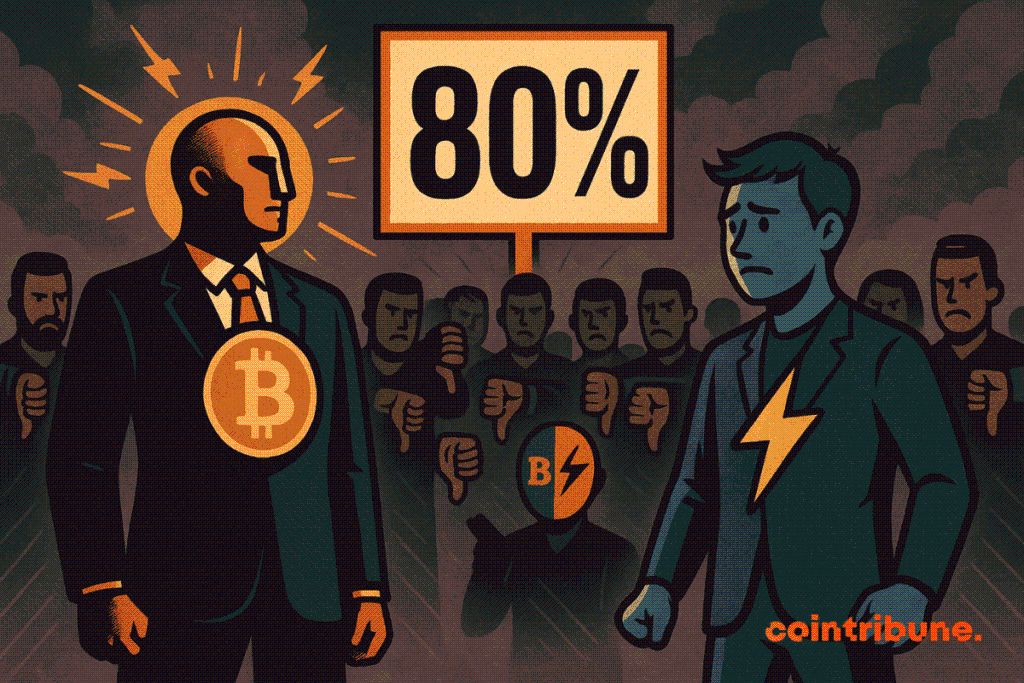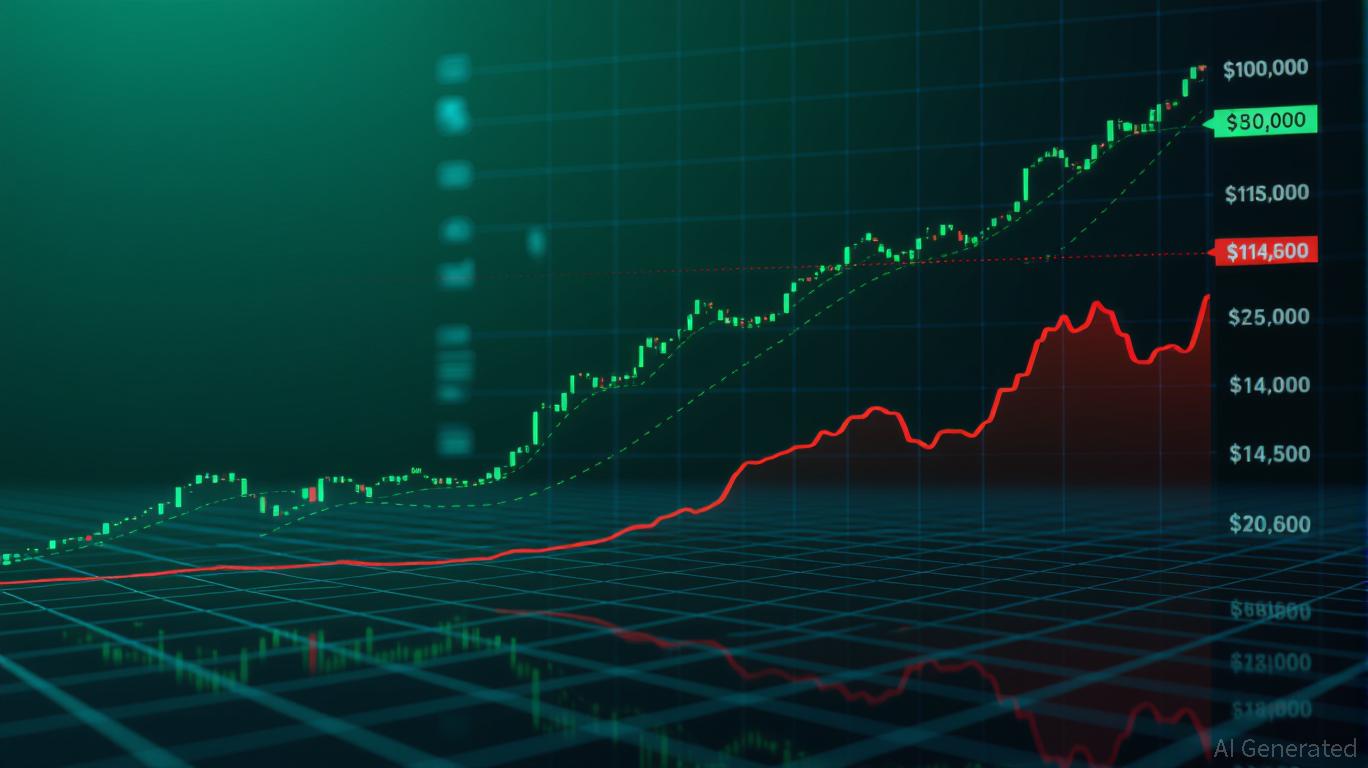Is the Lightning Network Losing Steam? The Numbers Raise Questions
An online survey sparked controversy: more than 80% of respondents believe that Lightning is not “real bitcoin.” A massive figure, and a clear divide between technical promise and market perception. The debate exploded on X, opposing pro-Lightning figures and sharp critics. Let’s summarize, decode, and project.

In brief
- A survey shows that 80% of respondents do not consider Lightning as real bitcoin
- The debate opposes critics mentioning complexity and liquidity dependence to defenders highlighting real use and micropayments
- Metrics stagnate while custodial products gain ground, hence the priority for a better UX and improvements like splicing.
Shocking survey, disrupted narrative
The message is harsh, for a large majority, Lightning does not embody “native” bitcoin. This perception is based on a simple intuition: if one must go on-chain to enter and exit the network, then Lightning appears as a separate environment, almost like a distinct token. The technical nuance, however, was not enough to convince.
In this context, the critics drove the point home. Paul Sztorc talks about a “cool system at first” that, over the years, “does not work.” He points out concrete constraints: nodes connected permanently, dependence on liquidity providers, need for watchtowers. For him, the user experience quickly slides toward custodial, and trust erodes.
On the other side, the response is clear. Alex Gladstein defends Lightning as a digital cash in bitcoin, without banks.
Matt Corallo adds a volume point: a double-digit share of BTC transactions would today be routed via Lightning. For them, the real-world reality already exists. The denial would, precisely, be to deny these uses.
The numbers that upset: stagnation and perceived centralization
Let’s look at the public metrics. The Lightning capacity is around a few thousand BTC , roughly the same level as in September 2022. No real surge in three years. The signal is clear: traction has not materialized at the hoped-for pace.
Another indicator, even tougher: the number of payment channels has almost halved since 2022, falling from over 80,000 to about 45,000. This is a marker of network density, surface, liquidity, and resilience. When channels diminish, the perception of centralization mechanically increases. And the “everyone can route everything” discourse loses credibility.
However, Lightning retains a key advantage: costs. Tiny payments, routed off-chain, sometimes approach a fraction of a cent. By contrast, on-chain bitcoin fees can devour hundreds of basis points on small amounts. On the “micropayments” axis, the technical advantage persists. But the narrative advantage, it wavers.
Competition from Bitcoin ETFs and revival avenues
Staying on the subject of perception, the context does not help. Volumes are exploding elsewhere, via ETFs. In Q3, JPMorgan observes a renewed interest in spot bitcoin ETFs , while wBTC-like and cbBTC progress. Apps like Moonshot, Base or Fomo boast onboarding in a few clicks, fast transactions, a smooth UX. The general public follows the slightest friction. And the bitcoin ecosystem pays for every step that seems too technical.
Should we bury Lightning? No. But we must tell the truth. The network has not converted the post-2022 trial. It remains powerful for specific cases: low-value recurring payments, “pay-per-use” models, targeted remittances. To scale, it lacks a “default” experience that hides the complexity of channels, liquidity, penalties, and connections. For market context, bitcoin trades today around the 106,000 $ mark at the time of writing, a symbolic milestone illustrating a moving ecosystem.
Disclaimer: The content of this article solely reflects the author's opinion and does not represent the platform in any capacity. This article is not intended to serve as a reference for making investment decisions.
You may also like
Marriott’s Departure from Sonder Underscores Challenges in Technology-Based Hospitality Collaborations
- Marriott abruptly terminated its licensing agreement with Sonder , leaving thousands of guests stranded and canceling over 9,000 properties from its booking platforms. - The move slashed Marriott's 2025 growth forecast to 4.5% as Sonder filed Chapter 7 bankruptcy due to integration costs and revenue decline linked to the partnership. - Guests faced refund reversals and accusations of corporate negligence, while critics highlighted inconsistent crisis management and risks of overreliance on short-term ren
Oil Consumption Expected to Increase Until 2050: Growth Driven by AI, Transportation, and Petrochemical Industries
- IEA revises energy outlook, projecting oil demand to reach 113M bpd by 2050 due to AI, transport, and petrochemicals. - Brazil, Guyana, and Argentina will lead 60% of new oil capacity through 2030, offsetting slower U.S. shale growth. - India's energy demand will surge 15 exajoules by 2035, driven by urbanization and 50% renewable grid capacity by 2025. - Global electricity demand will rise 40% by 2035, outpacing overall energy growth but lagging climate transition progress.
Bitcoin’s Abrupt Price Swings in Late 2025: Broader Economic Risks and Ripple Effects in the Derivatives Market
- Bitcoin's late 2025 volatility reached critical levels due to macroeconomic pressures, derivatives spillovers, and regulatory shifts. - Derivatives liquidations exceeded $20B as leverage ratios hit 1,001:1, with Bitcoin longs accounting for $499.89M in October 2025 losses. - Regulatory clarity boosted institutional participation but exposed vulnerabilities, as Q4 saw $1.22B in Bitcoin ETF outflows amid AI fears and Fed tightening. - Geopolitical shocks like U.S.-China tensions triggered 14% Bitcoin crash

Bitcoin’s Price Rally in November 2025: The Intersection of Institutional Investment and Global Economic Changes
- Bitcoin surged to $114,600 in November 2025 amid Fed rate cuts, geopolitical tensions, and whale accumulation despite ETF outflows. - Institutional adoption shifted toward privacy tokens like Zcash for compliance, yet 140+ firms hold $137B in crypto including Bitcoin. - Whale buying (36,000 BTC added) countered short-term redemptions, while JPMorgan and MicroStrategy expanded Bitcoin holdings. - Geopolitical risks and fiat devaluation concerns boosted Bitcoin's appeal as a decentralized hedge over tradit

